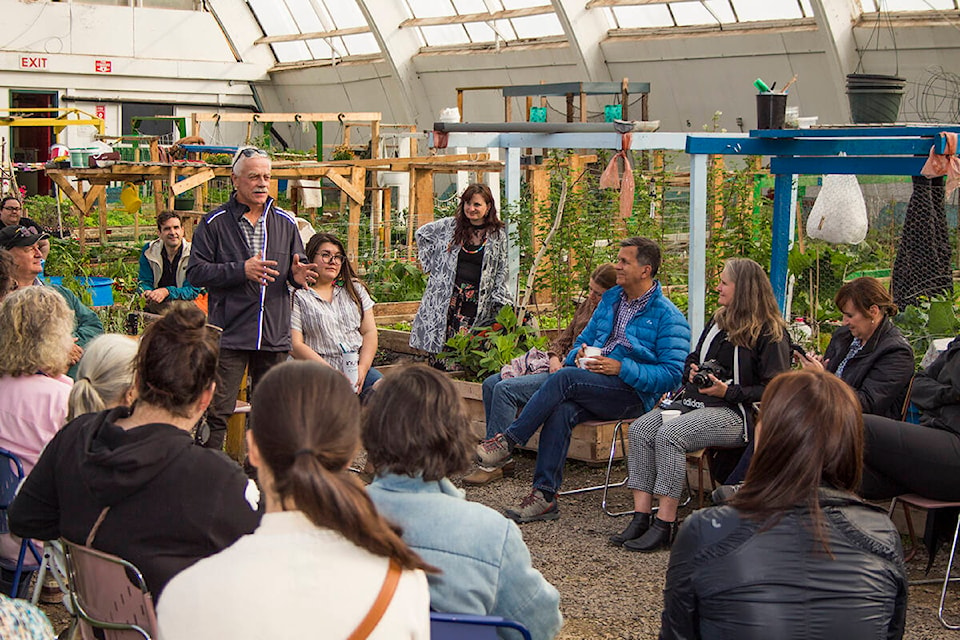The Canada Council for the Arts wants northerners to know — if you have art that needs financial support, they will provide it.
Members of the council met with local artists at the Inuvik Community Greenhouse on June 24 to promote the national grant body and its opportunities.
“Anyone applying from anywhere in this country will have the same chance to get the grant,” said CEO Simon Brault. “Our staff knows that anytime we get an application from an under-served region or community, we need to pay attention to it 10 times more. We want to make sure that the success rate will be what it should be.
“So I think the message we’re making is you have to apply.”
Brault added that the CCA must evolve from an ivory tower to a beacon. He said changes are coming to make the application process less awkward. One of those changes includes doing away with the unpopular profiles of the applicant portal.
But he also noted the Northwest Territories has among the lowest number of applicants for grant funding from across Canada. This statement reflects recently published numbers which show only $466,100 awarded to NWT arts organizations and artists, compared to $2.1 million granted to the same in Nunavut and $2.3 million granted in Yukon. But in both cases, the bulk of the funding — $1.8 million in the Yukon and $1.5 million in Nunavut — went to arts organizations.
Meanwhile, arts organizations in the NWT only received $266,600. Brault says that’s because most arts organizations didn’t apply for any funding.
“The issue is the number of applications,” he said. “If you apply to the Canada Council, you will have the same chance of getting granted as in Montreal. We can fix that, but what we cannot do is generate the application.
“So it’s for you to knock on our door.”
A form of reconciliation
Support from national bodies is important, noted artist Denise MacDonald, who called the mental health benefits of supporting Indigenous artists a form of reconciliation.
“For me, it is my therapy,” she said. “It not only validates who I am as a Gwich’in woman but it also is my peace. It’s my passion. It’s really my joy in life.”
MacDonald added many artists are hindered by the high cost of materials, both in shipping them in and refining locally harvested items for use.
Many of the artists who came out noted they need to send their furs out of the country to treat them, as the Canadian fur industry is non-existent outside of the north. Some spoke up for others, pointing out that a lot of northern artists are Elders and hunters often disconnected from things southerners take for granted, like internet access, which is needed to apply for many grants.
In the same vein, more marketing to show artists what programs are available and to showcase the work being done would benefit creators in the area, said Brian Kowikchuk.
“Right now we are basically depending on the tourist stream that comes up when the sun’s here for 24 hours and we’re here for the other 80 percent of the year,” he said, adding the arts community needed a dedicated space to help artists focus their creativity. “Create a good space for our people and make it more encouraging for people to want to produce things.
Wellness worker, Inuvik Drummer and Dancer Billie Lennie shared more on the difficulties of getting material to make clothing, notably moose hide which requires a specific knowledge to tan properly.
If the support is there, artists are willing to accept it. Lennie added there was more than enough interest in the region to learn traditional arts and crafts.
“We recently held a sewing class and I said the limit will be 10 people to show up to do moccasins,” she said. “Within half an hour we had 30 people signed up and I was like how do you choose? So we said forget it, we’ll just do the whole works.
“So we have 30 different people and they’re just people you would have never thought of but they’re all so interested. That just shows the importance of it.”
